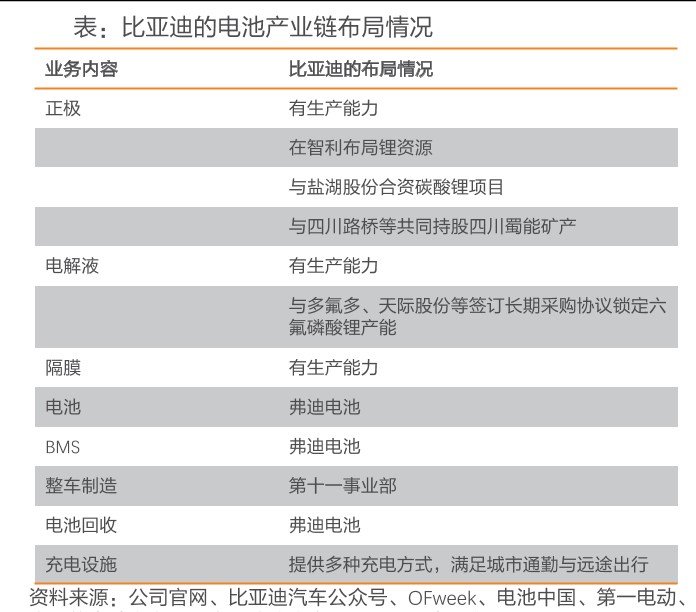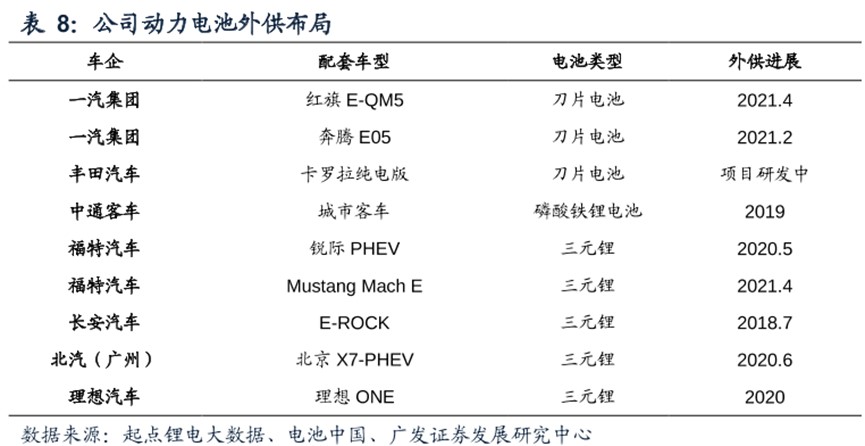Sichuan Provincial Committee of the Communist Party of China Sichuan Provincial People’s Government
Opinions on the implementation of the three-year campaign to win the fight against poverty (abstract)
(August 31, 2018)
In order to conscientiously implement the important instructions of the Supreme Leader General Secretary on winning the three-year campaign against poverty and the spirit of "Guiding Opinions of the Central Committee of the Communist Party of China and the State Council on Winning the Three-year Campaign against Poverty", and promote the more effective development of the fight against poverty, the following implementation opinions are put forward in combination with the actual situation in our province.
First, comprehensively grasp the overall requirements for winning the three-year campaign against poverty.
(A) the guiding ideology
Adhere to the guidance of the Supreme Leader’s Socialism with Chinese characteristics Thought in the New Era, fully implement the spirit of the 19th National Congress of the Communist Party of China, thoroughly study and implement the spirit of the important instructions of the General Secretary of the Supreme Leader on Sichuan’s work series, conscientiously implement the deployment of the Third Plenary Session of the Eleventh Provincial Party Committee, always regard tackling poverty as the greatest political responsibility, the biggest livelihood project and the greatest development opportunity, adhere to the basic strategy of precise poverty alleviation, and adhere to the working mechanism that the province takes overall responsibility and the cities and counties implement it. Adhere to the pattern of large-scale poverty alleviation work, adhere to the problem orientation, quality orientation and goal orientation, pay attention to the connection between poverty alleviation and rural revitalization, the coordination between development poverty alleviation and affordable poverty alleviation, the combination of poverty alleviation and intellectual support, and the unity of continuing to attack poverty and preventing poverty return. Focus on deep poverty-stricken areas and special poverty-stricken groups, optimize policy supply, refine assistance measures, strengthen security investment, focus on improving the practical skills of poverty alleviation, and focus on strengthening work style construction in poverty alleviation. Efforts will be made to stimulate the endogenous motivation of the poor, to consolidate the foundation for the poor to get rid of poverty, to effectively improve their sense of gain, to ensure that by 2020, the poor areas and poor people in our province will join the whole country in entering a well-off society in an all-round way, and to lay a solid foundation for implementing the rural revitalization strategy and promoting the governance of Sichuan to a new level.
(II) Objectives and tasks
By 2020, under the current standards, all the rural poor in the province will be lifted out of poverty and absolute poverty will be eliminated; All poverty-stricken counties take off their hats to solve regional overall poverty. The growth rate of per capita disposable income of farmers in poverty-stricken areas is higher than the provincial average. The indicators of the main areas of basic public services in poverty-stricken areas are close to the national average. The development environment of the province’s concentrated contiguous poverty-stricken areas, old revolutionary areas, ethnic areas and mountainous areas around the basin has been significantly improved, and the deep poverty-stricken areas have completed the task of comprehensive poverty alleviation as scheduled.
In the next three years, 1.713 million poor people in the province will be lifted out of poverty, 5,295 poor villages will be withdrawn, and 68 poor counties will be stripped of their hats. The overall progress of poverty alleviation is: in 2018, 1 million poor people will be lifted out of poverty, 3,500 poor villages will be withdrawn, and 30 poor counties will be removed from their hats; In 2019, 635,000 poor people were lifted out of poverty, 1,622 poor villages withdrew, and 31 poor counties took off their hats; In 2020, 78,000 poor people will be lifted out of poverty, 173 poor villages will be withdrawn, and 7 poor counties will be stripped of their hats.
(3) Work requirements
Adhere to the party’s leadership and strengthen organizational guarantee. Give full play to the leading role of the Party Committee in overall planning and coordinating all parties, strictly implement the responsibility system for the top leaders of the party and government in tackling poverty, and work together with the five secretaries of provinces, cities, counties and villages. Strengthen the construction of rural grass-roots party organizations in poverty-stricken areas and make them a strong fighting fortress to lead the masses out of poverty and become rich.
Adhere to the target standards and improve the quality of poverty alleviation. Insist on improving the quality of poverty alleviation in the first place, focus on "two worries and three guarantees", reasonably determine the time sequence of poverty alleviation, do not increase the number of layers, do not lower the standard, and do not raise the standard without authorization. Fully implement the requirements of "six precisions", make great efforts to embroider, and solve the problems of who to support, who to help, how to help, and how to retreat, so as to help the really poor, really help the poor, and really get rid of poverty.
Insist on increasing investment and strengthening policy support. Give play to the main body and leading role of government investment, increase the investment of financial funds in poverty alleviation, and attract social funds to participate in poverty alleviation. Balancing poverty-stricken counties and non-poverty-stricken counties, poverty-stricken villages and non-poverty-stricken villages’ poverty-stricken population support policies as a whole, establishing and improving the policy system of affordable poverty alleviation on the premise of paying attention to the benefits and fairness of public policies, and giving play to the comprehensive poverty alleviation effect of development-oriented poverty alleviation and affordable poverty alleviation.
Adhere to social mobilization and unite all forces. Strengthen the responsibility of government leading and department leading, innovate the way of social mobilization, improve the mechanism of social participation, guide the coordinated efforts of the market and society, and build a large-scale poverty alleviation pattern in which special poverty alleviation, industry poverty alleviation and social poverty alleviation complement each other.
Adhere to strict requirements and promote practical work. We should strictly manage the party in an all-round way throughout the whole process of poverty alleviation, regard the battlefield of poverty alleviation as an important position to train cadres, strengthen grassroots assistance, and improve the ability of cadres at all levels to get rid of poverty. Implement normalized inspections and inspections and the most rigorous assessment to ensure that the process of poverty alleviation is solid and the results of poverty alleviation are real, and the results of poverty alleviation can stand the test of practice and history.
Adhere to the subject of the masses and stimulate endogenous motivation. Adhere to the combination of poverty alleviation and supporting the will and wisdom, and fully mobilize the enthusiasm and creativity of cadres and masses in poverty-stricken areas. Deepen the change of customs, cultivate a new civilized style, and pay more attention to improving the self-development ability of poor areas and poor people.
Second, concentrate on overcoming the task of poverty alleviation in deep poverty-stricken areas
(4) Concentrate on promoting key areas to tackle key problems.
Insist on tackling poverty to lead the regional development of deep poverty-stricken areas, make concerted efforts to promote the "seven major actions" of housing, industry, employment, education, health, infrastructure and ecological poverty alleviation, and vigorously implement the "six livelihood projects action plan" in Tibetan areas and the "ten poverty alleviation projects" in Yi areas.
We will conscientiously implement the plan of the provincial party committee and the provincial government to comprehensively help Liangshan Prefecture win the battle against poverty in an all-round way, and implement 34 policies and measures in 12 aspects, including industrial employment, education development and medical and health development. In three years, 622,000 poor people in deep poverty-stricken areas were lifted out of poverty, 2,180 poor villages withdrew and 40 poor counties took off their hats.
Vigorously improve the development conditions of deep poverty-stricken areas. In-depth development of a new round of "traffic conference war" in Ganzi Prefecture and Liangshan Prefecture, speeding up the road construction of 32 townships and 452 administrative villages with remaining hardened roads, and achieving full coverage of oil roads in townships and hardened roads in established villages. In-depth implementation of water conservancy, electric power, network and other poverty alleviation projects will comprehensively solve the problem of safe drinking water for 124,500 poor people, the problem of electricity consumption for 11,800 poor households in 177 poverty-stricken villages, the problem of fiber-optic broadband access in 1,261 poverty-stricken villages and the problem of 4G network access in 743 poverty-stricken villages. Promote the integration of funds, unified planning, and overall implementation of rural land comprehensive improvement and high-standard farmland construction in deep poverty areas. We will implement the natural forest protection project to build 600,000 mu of public welfare forest, return 200,000 mu of farmland to forests in a new round, and renovate 150,000 mu of ecologically fragile areas, so as to achieve the balance between grass and livestock in pastoral areas by 2020. Vigorously implement the upgrading project of poor villages.
Focus on solving the special difficulties of the people in deep poverty-stricken areas. We will fully implement the health poverty alleviation campaign in deep poverty-stricken areas, and the proportion of medical expenses paid by poor patients for hospitalization in the county, referral to hospitalization outside the county according to regulations, and outpatient maintenance treatment for chronic diseases will be controlled within 5%. Do a good job in AIDS prevention and control in Liangshan Prefecture and comprehensive prevention and control of echinococcosis in Tibetan areas. Strengthen the rectification of birth order and guide the masses to give birth according to the policy. Implement anti-drug and poverty alleviation measures by classification, increase support for anti-drug and anti-drug work in Liangshan Prefecture, continue to promote the construction of "1+15+N" drug rehabilitation system, and promote the realization of detoxification and poverty alleviation. Intensify the education and promotion of the national common language, deepen the construction of "one village and one child" in Yi area, and actively promote the "action of learning Putonghua before school". We will do a good job in accurately identifying, helping and getting rid of poverty in Liangshan Autonomous Prefecture.
(5) Increase the support for policy inclination.
We will increase financial input, with 30 billion yuan added by governments at all levels, reaching a total of 121 billion yuan. Strictly implement the requirements of "three increases and one exemption", further increase the balanced transfer payment of provincial finance, and tilt to deep poverty-stricken counties when allocating relevant special transfer payment funds, so as to ensure that the per capita expenditure on basic public services will reach the county-level average level in the province by 2020. We will improve the county-level basic financial security reward and compensation policy, and the provincial finance will subsidize the gap in the settlement of the deep poverty-stricken counties whose own financial resources cannot meet the basic standard expenditure needs. For deep poverty-stricken counties that get rid of poverty every year, considering the incidence of poverty and other factors, they will be given a one-time financial subsidy according to the standard of an average of 10 million yuan per county. Increase the general bond limit for deep poverty areas.
Increase financial support, give priority to meeting deep poverty areas with new financial funds, and give priority to the layout of deep poverty areas with new financial services. We will implement the regulatory requirements for differentiated financial precision poverty alleviation, give priority to meeting the demand for poverty alleviation refinancing of corporate financial institutions in deep poverty-stricken counties, and strive to make the proportion of poverty alleviation refinancing in deep poverty-stricken areas in the province higher than the same period of last year from 2018 to 2020. Implement the relevant requirements of increasing the risk-sharing ratio of the poverty alleviation microfinance risk-sharing fund from 7: 3 to 8: 2. The "green channel" policy will be implemented for qualified enterprises in deep poverty areas to issue shares for the first time, list in the national share transfer system for small and medium-sized enterprises, and issue corporate bonds and asset-backed securities. Support qualified enterprises in deep poverty areas to raise funds by issuing short-term financing bills, medium-term bills, special poverty alleviation bills, social effect bonds and other debt financing tools.
Increase the tilt of land policy, fully guarantee the land for infrastructure construction, ex situ poverty alleviation and relocation, and people’s livelihood development in deep poverty-stricken areas, and solve the insufficient part together. On the basis of controlling the total scale of urban and rural construction land, optimize the structure and layout of urban and rural land in deep poverty areas in a timely manner and report to the government with approval authority for approval. Give priority to the annual plan of new construction land for poverty alleviation in deep poverty-stricken areas, and the insufficient part shall be reported to the provincial land and resources department for advance use. If the provincial plan indicators are insufficient, report to the Ministry of Natural Resources for additional identification. Construction projects below the provincial level in deep poverty-stricken areas, which are really difficult to avoid permanent basic farmland, can be included in the scope of major construction projects, and the provincial land and resources department shall handle the pre-examination of land use, and handle the conversion of agricultural land and land expropriation in accordance with regulations. In deep poverty-stricken areas, the increase or decrease of urban and rural construction land can be linked without being limited by the scale of indicators, and actively promote the inter-provincial adjustment and use of savings indicators linked to increase or decrease in deep poverty-stricken areas. Increase or decrease the old areas linked to the demolition, under the premise of ensuring that the cultivated land area does not decrease and the construction land does not increase, it can be reclaimed according to the principle of suitable tillage, suitable forest and suitable grass, and encourage priority reclamation for high-standard farmland. Increase investment in land consolidation and high-standard farmland construction in deep poverty-stricken areas.
(6) coordinating and strengthening the assistance work.
In-depth implementation of counterpart assistance and designated poverty alleviation in the province, give full play to the role of counterpart assistance in cities and counties, provincial departments and directly affiliated units, universities, hospitals, state-owned enterprises and financial institutions, and implement group-based and group-based precise assistance. We will send comprehensive assistance teams to 11 deep poverty-stricken counties in Liangshan Prefecture to implement "one county, one team" precise assistance, mainly to poor towns and villages, and make overall plans to do a good job in tackling poverty, ignorance, drugs, overload, dropping out of school, keeping school, strengthening the construction of grassroots organizations and cultivating grassroots talents. Do a good job in the relevant work of national social organizations participating in the poverty-stricken areas in our province.
We will deepen the cooperation between the east and the west in poverty alleviation and counterpart aid to Tibet, promote the normalization and institutionalization of high-level exchange visits, and establish a poverty alleviation cooperation ledger system. Strictly implement the requirement that more than 80% of counterpart support funds for Tibetan areas should be used to protect and improve people’s livelihood and at the grassroots level at or below the county level, and guide the assistance resources to lean towards poor villages and poor people. Give full play to the comparative advantages of both sides and deepen exchanges and cooperation in various fields such as industrial development and park co-construction. Strengthen grassroots cadres and education, health and other talents to exchange and study, and increase the intensity of group-based medical support. Vigorously promote the "join hands to run a well-off society" and actively carry out pairing assistance between towns and villages (communities).
Enlarge and strengthen the existing "enclave" parks such as Chengdu-Aba, Ganzi-Meishan, Chengdu-Ganzi and Deyang-Aba, and accelerate the construction of "enclave" parks such as Foshan-Liangshan Agricultural Industrial Park and Chengdu-Liangshan. By 2020, there will be more than 200 industrial enterprises above designated size, with an operating income of about 40 billion yuan.
(7) Vigorously implement the talent revitalization project.
Adhere to the combination of external introduction and local training, adhere to the combination of solving current urgent needs and long-term service, implement the "five major projects" of directional training, on-the-job training, talent recruitment, talent assistance and talent stability, and comprehensively expand the talent team in deep poverty-stricken counties. We will further increase our support for talent training and cadre selection in deep poverty-stricken counties, and carry out cadre talent training in different levels and categories. In three years, we will train 10,000 college students and focus on training 168,300 people in deep poverty-stricken counties, recruit and recruit 49,000 professional and technical personnel in education, health, agriculture, forestry, tourism and environmental protection, and pay attention to "one village, one child", "one village, one doctor" and "one village, one general subject" By 2020, the rural practical talents in deep poverty-stricken counties will be sufficient, the professional talents will be complete, the talent structure in key areas will be reasonable, the problem of talents being unable to be introduced and retained will be fundamentally improved, and the quantity and quality of talents will be greatly improved.
Third, strengthen the fight against poverty from village to household to people.
(8) Fight hard for housing construction.
Vigorously implement ex situ poverty alleviation and relocation, complete the task of ex situ poverty alleviation and relocation of poverty-stricken people in the "Thirteenth Five-Year Plan" with high quality, ensure that the poor people with relocation and resettlement conditions should move as much as possible, and gradually implement simultaneous relocation. Strictly implement the standards and requirements that the per capita building area does not exceed 25 square meters, and the average household raises no more than 10,000 yuan, so as to prevent poor people from bearing heavy debts due to building houses. In areas with extremely harsh natural conditions and development environment, combined with the adjustment of administrative village planning and layout, the whole village and group relocation are encouraged. Promote the "small-scale, group-based, micro-pastoral and ecological" construction mode, further increase the proportion of centralized resettlement in combination with new urbanization construction, simultaneously promote the construction of supporting infrastructure and basic public service facilities in resettlement areas, do a good job in industrial support and employment resettlement, and coordinate various poverty alleviation and security measures to ensure the relocation of one household and the stable poverty alleviation of one household. Strengthen community management and services in resettlement areas, do a good job in continuing services such as household registration management, medical treatment at school, social security and psychological counseling for relocated people, and guide the relocated people to integrate into the new environment and new community as soon as possible.
In-depth implementation of rural dilapidated housing renovation, combined with the actual promotion of simple and easy dangerous housing identification procedures, standardize the object identification procedures, establish dangerous housing accounts and implement precise management, and transform one household and sell one file. Improve the classification and grading subsidy standards, and the funds paid to farmers should be directly allocated to households in full and on time. By the end of 2020, we will fully complete the task of rebuilding dilapidated houses in rural areas for poverty-stricken households with stock files. Encourage the construction of rural collective public rental housing and happy compound, repair and strengthen existing idle public houses, replace or lease idle rural houses in the village for a long time, etc., to solve the housing security problems and the convenience of production and life of special poor groups. Deepen the implementation of the "Measures for the Administration of Rural Housing Construction in Sichuan Province" and promote the construction of rural safe housing in a standardized and orderly manner.
(9) Fight the tough battle of industrial poverty alleviation.
Increase the adjustment of industrial structure in poverty-stricken areas, carry out the upgrading project of characteristic industries in poverty-stricken areas in depth, accelerate the development of planting and breeding, forestry and grass industry, agricultural product processing industry, characteristic handicraft industry, leisure agriculture and rural tourism, and actively cultivate and promote characteristic products with market, brand and benefit.
Highlight the advantages of regional characteristics, give priority to the agricultural projects with characteristics in poverty-stricken areas in the action plan to improve the quality and efficiency of agriculture with characteristics, build 6 million mu of agricultural industrial bases by 2020, and newly renovate and expand 2,500 standardized farms (communities) and 121 aquaculture bases. Deepen the development of industrial integration, support qualified poverty-stricken counties to set up poverty alleviation industrial parks with the integration of primary, secondary and tertiary industries, and build 450 demonstration parks with modern agricultural industrial integration and 2550 primary processing facilities for agricultural products. Efforts will be made to cultivate regional public brands of high-quality agricultural products in poverty-stricken areas and actively develop "three products and one standard" characteristic agricultural products. We will further promote poverty alleviation through science and technology, vigorously promote the "five-movement" model of poverty alleviation through science and technology, which is "enterprise-driven, industry-driven, school (college)-local linkage, online interaction and entrepreneurship-driven". By 2020, we will build 100 provincial-level science and technology poverty alleviation industrial demonstration bases and 100 "Sichuan science and technology poverty alleviation online" city and county transportation management centers. Support qualified poverty-stricken counties to build agricultural science and technology parks and create a world with stars, and display and popularize advanced agricultural scientific and technological achievements. Organize national and provincial leading enterprises to cooperate with poor counties to create a standardized base for raw materials of green food and organic agricultural products. Improve the interest linkage mechanism of industrial poverty alleviation, promote effective practices such as joint-stock cooperation, order assistance, and production custody, and realize the integration of poor households into modern agricultural development. By 2020, more than 50% of the poor people in the province will be driven out of poverty by leading enterprises, and more than 80% of the poor villages will have more than one leading enterprise to help them. Each poor family will have at least one source of stable income or income increase.There are 500 provincial demonstration cooperatives and 700 provincial demonstration farms for family farms. Improve the technical support system for industrial development in poverty-stricken areas, establish an industrial development instructor system for poor households, and fully equip and strengthen township agricultural science and technology personnel to help poor households coordinate and solve production and operation problems.
Conscientiously implement the deployment of the provincial party Committee and the provincial government on innovating the sales system of poverty alleviation products to promote accurate poverty alleviation, and comprehensively implement the public welfare collective trademark of "Sichuan Poverty Alleviation". Increase the connection between production and marketing, implement agricultural products promotion actions such as e-commerce marketing, helping units to promote sales, underwriting by commercial circulation enterprises, and directed direct supply and direct sales, promote market entities such as wholesale markets, e-commerce enterprises, and large supermarkets to establish long-term and stable production and marketing relations with poor villages, and organize activities of directed direct supply and direct sales schools, hospitals, government canteens and trading markets for agricultural products in poor areas. Actively organize the exhibition activities of agricultural special products in poverty-stricken areas in Sichuan Province, and organize the production and operation enterprises of poverty-stricken products in poverty-stricken areas to participate in the three major activities of market expansion, such as "Sichuan goods nationwide trip", "Huimin shopping all over Sichuan action" and "all enterprises go abroad". Support supply and marketing, postal services and various enterprises to extend their service outlets to poor villages, promote the mode of "purchasing instead of donating" and "supply and marketing cooperatives+small farmers+poor households" to expand the sales of agricultural products in poor areas. In-depth development of e-commerce into rural comprehensive demonstration projects, support the construction of rural e-commerce services and logistics distribution sites, and help poor households with conditions to open online stores (micro-stores). Explore the formulation of e-commerce sales reward and subsidy policies, transportation and logistics subsidy policies for special agricultural products sales areas (counters) in poverty-stricken areas, and implement relevant preferential tax policies. We will build an e-commerce platform for agricultural products in the province, establish an offline experience center for famous and excellent agricultural products in poverty-stricken areas in the province, promote the effective combination of e-commerce and business entities, and realize "online goods going to the countryside" and "agricultural products entering the city".Support poverty-stricken counties to improve market systems such as township farmers’ markets, featured commodity markets and featured commercial streets, and circulation infrastructure such as agricultural products cold chain, warehousing and logistics distribution systems.
Vigorously develop forestry eco-economy, support the construction of woody oil industry concentration areas in Qinba Mountain area, modern bamboo forest base in wumeng mountain, characteristic forestry industrial base in Tibetan areas of western Sichuan, excellent new economic fruit base and large and medium-sized timber forest base in Liangshan Yi area, and cultivate 16 million mu of modern forestry industrial base in 2020. Support the holding of eco-tourism festivals such as flowers (fruits), red leaves and giant pandas relying on natural resources such as forests, grasslands, wetlands and wild flowers, and build a number of national and provincial eco-tourism and eco-health demonstration zones.
Actively promote poverty alleviation through tourism, support qualified poverty-stricken areas to create national tourism demonstration zones and tourism industry gathering areas, poverty-stricken counties to create tourism poverty alleviation demonstration zones, poverty-stricken villages to create tourism poverty alleviation demonstration villages, poor households to build rural residents to meet the standard, actively develop new formats of rural tourism, cultivate rural tourism cooperatives, and build rural tourism brands. Support and guide poor areas to plan tourism marketing activities.
Implement photovoltaic poverty alleviation projects, develop village-level photovoltaic power stations or village-level photovoltaic power stations according to local conditions in areas with good lighting conditions, and promote photovoltaic poverty alleviation in an orderly manner.
Actively promote the reform of rural collective property rights system in poverty-stricken areas, explore the reform of changing rural resources into assets, funds into shares, and farmers into shareholders, make good use of industrial support funds for living poor villages and pilot funds to support the development of village-level collective economy, increase collective economic income through activating collective resources, holding shares or shares, and quantifying asset income, so as to ensure that the per capita collective economic operational income of 5,295 poverty-stricken villages reaches the standard. By 2020, the "empty shell villages" of the collective economy will be completely eliminated, and a large number of villages with developed collective economy will be cultivated in poor areas.
Support poor counties to integrate financial agriculture-related funds and develop characteristic industries. Encourage all localities to use poverty alleviation funds from a practical point of view to develop industries that are difficult to achieve short-term results and can continue to exert benefits in the future. Incorporate industrial poverty alleviation into the effectiveness assessment of poverty alleviation in poverty-stricken counties and the audit of the departure of party and government leaders, and guide local governments to develop long-term and stable poverty alleviation industrial projects.
(10) Fight the tough battle of employment and poverty alleviation.
We will implement the action plan for poverty alleviation through employment, improve the "five lists in one library" of poor laborers, fully implement the "nine measures" for poverty alleviation through employment, and strive to broaden the channels for the poor to increase their employment. By 2020, the number of poor laborers will be transferred to employment, and at least one poor household with working ability and willingness to work will be employed.
We will implement the special action of skills poverty alleviation and the full coverage of skills training for poor laborers in deep poverty areas, make overall plans to integrate all kinds of training resources and funds, and organize poor family laborers who are willing to take part in employment skills training, rural practical technical training, ethnic handicraft training, language and guiding training, and labor preparation training. Solidly carry out training activities such as "sending training to the countryside", "special poverty alleviation classes" and "helping one with one", and train more than 300,000 poor laborers. Further promote the cooperation of poverty alleviation services, strengthen the work of labor export services, establish service agencies in cities where migrant workers are employed, and improve the organizational degree and employment quality of labor docking; Implement the action of docking domestic and nursing services to help the poor, build the brand of domestic and nursing services in poor areas, and improve the employment guarantee mechanism of domestic and nursing services; Relying on the "35+45" counterpart assistance mechanism in the province, guide the poor labor force to get full employment outside the province and county; Encourage and guide industrial and commercial enterprises and agricultural production and operation entities to absorb poor labor and find employment nearby; Special job fairs for employment and poverty alleviation will be held at various levels and in various forms, and small and micro recruitment activities such as sending job information "into the countryside and entering the village" and employing enterprises will be organized to help the labor force of families with special difficulties stabilize employment.
Encourage and support the development of eco-friendly labor-intensive industries in poverty-stricken areas, and support enterprises to build poverty-alleviation workshops in qualified poverty-stricken villages through post subsidies, field rent subsidies, loan support, etc., so as to attract poor family laborers to work nearby. By 2020, 700 standardized poverty alleviation workshops will be built and 200 employment poverty alleviation bases will be built. Encourage cities and counties to integrate resources and funds, and develop public welfare posts such as old-age care, assistance for young people in distress, care for the disabled, social security co-management, forest protection and greening, rural road maintenance, full-time monitoring of geological disasters, rural cleaning, labor and social security assistant, and work services for the disabled in villages. More than 20,000 public welfare posts have been developed in the province. Actively develop the "returning geese economy", further strengthen policy support from the aspects of factor guarantee, financial support, financing and credit, and entrepreneurial services, increase the service, guidance and training for returning entrepreneurs, and build entrepreneurial parks and rural entrepreneurial innovation parks to promote the employment of poor laborers.
(11) Fight hard against poverty through education.
With the guarantee of compulsory education as the core, we will fully implement the policy of poverty alleviation through education, and implement the "six-long" responsibility system, which is jointly responsible by county heads, directors, township (town) heads, principals, village heads and parents, to ensure that school-age children in compulsory education in poverty-stricken areas, especially in deep poverty-stricken areas and ethnic minority areas, should attend school and steadily improve the quality of compulsory education in poverty-stricken areas.
We will comprehensively promote the transformation of schools with weak compulsory education in poverty-stricken areas, focus on promoting the construction of standard central schools in townships, strengthen the construction of boarding schools in townships and small-scale schools in rural areas, and run necessary village primary schools and teaching points to ensure that all compulsory education schools meet the basic conditions for running schools. Support ordinary high schools in poverty-stricken counties to improve school conditions, run comprehensive high schools well, and vigorously improve the popularity of ordinary high schools in concentrated contiguous areas; Accelerate the development of vocational education in poverty-stricken areas, build a number of secondary vocational schools in poverty-stricken areas where population is concentrated and industrial development needs, strive for high-quality secondary vocational schools in developed areas to strengthen assistance to secondary vocational schools in poverty-stricken areas, and guide secondary vocational students to receive vocational education in secondary vocational schools in developed areas. We launched a special plan for higher vocational education in poverty-stricken areas, and trained 10,000 teachers, health workers and agricultural technicians.
Improve the financial aid policy system covering all levels and types of education, and the realization of student financial aid policy should help as much as possible. We will implement policies such as "three exemptions and one subsidy" for compulsory education, and continue to implement the nutrition improvement plan for rural compulsory education students and the heating plan for students in compulsory education schools in high-altitude ethnic areas. We will implement the policy of reducing or exempting tuition fees for preschool education for poor students, tuition fees for senior high schools and state grants, and continue to implement the 15-year free education in ethnic areas and the "9+3" free vocational education plan. We will implement student aid policies such as national scholarships for higher education and national student loans. On the basis of full financial support for students from poor families in each school period, 1000 yuan’s living allowance will be given to each student of secondary vocational schools from poor families every year. For the newly enrolled students from poor families (including higher vocational colleges) from the autumn of 2016 to 2020, each student will be given a subsidy of 4,000 yuan per year until the end of their studies. We will implement the employment assistance policy for poor college graduates, and increase the subsidy for employment difficulties from 400 yuan to 600 yuan.
Strengthen the construction of rural teachers in poverty-stricken areas, give preference when implementing the national training plan and provincial teacher training programs, increase the training of "bilingual" teachers, fully implement the exchange of teachers and principals between urban and rural areas (rotation), and send backbone teachers with intermediate titles or above to teach in remote and poverty-stricken areas, ethnic areas and old revolutionary areas every year. Improve the treatment of rural teachers in poor areas, implement the policy of teachers’ living allowance, and allocate teachers’ resources in urban and rural areas in a balanced way.
We will speed up the sharing of quality education resources, vigorously implement the educational twinning actions such as helping township central kindergartens in urban areas within the county, helping weak compulsory education schools in rural areas in high-quality compulsory education schools within the city, helping ordinary high schools in poor counties in high-quality ordinary high schools within the province, and helping poor counties in colleges and universities within the province, and promote the implementation of 1,000 primary and secondary schools in the mainland to help primary and secondary schools in deep poverty-stricken counties. We will make every effort to promote the construction of "broadband network school-to-school communication, high-quality resources class-to-class communication, and online learning space for everyone" in primary and secondary schools in poverty-stricken areas, and continuously expand the scope of sharing high-quality educational resources.
(12) Fight hard for health and poverty alleviation.
In-depth implementation of the "five major actions" of medical assistance and support for the poor, public health protection for the poor, improvement of medical capacity in poverty-stricken areas, cultivation of health talents in poverty-stricken areas and rectification of fertility order in poverty-stricken areas. We will implement policies such as "ten exemptions and four subsidies" for poor people to participate in the basic medical insurance for urban and rural residents, and "two guarantees, three rescues and three funds", and implement systems such as graded diagnosis and treatment, payment after diagnosis and treatment, one-stop settlement, and publicity of medical expenses. The proportion of personal payment of medical expenses for hospitalization and chronic disease outpatient maintenance treatment for poor patients outside deep poverty counties is controlled within 10%. Free health check-ups, basic public health services, health education and health promotion for the poor. Women’s cervical cancer, breast cancer screening, children’s nutrition improvement and neonatal disease screening projects have been expanded to all poverty-stricken counties. We will accelerate the establishment of third-level medical and health institutions in counties and villages, and strengthen the capacity building of township hospitals and village clinics in poverty-stricken areas. Provide telemedicine equipment and facilities for poverty-stricken county hospitals, build an interconnected telemedicine service network from tertiary hospitals to county hospitals in an all-round way, and gradually extend to township hospitals and village clinics. Fully implement the integrated management of rural medical and health institutions in poverty-stricken areas, and build a three-level linkage medical service and health management platform. 117 tertiary hospitals in the province provided counterpart assistance to 217 county-level hospitals in 88 poverty-stricken counties. Through comprehensive assistance, counterpart support, hospital trusteeship, telemedicine, roving medical care and free clinic activities,Help improve the medical and health service capacity in poverty-stricken areas. Every township health center in poverty-stricken areas should set up at least one special post for general practitioners. Support all localities to train rural higher vocational (specialist) medical students free of charge, and supplement them to village clinics and township hospitals in poverty-stricken areas after passing the training of assistant general practitioners. Poverty-stricken areas can directly select and employ medical technicians for the talent market within the existing total establishment, and give priority to the shortage of local medical and health professionals when selecting and hiring. Strengthen the improvement of birth order in key counties, advocate prenatal and postnatal care, strengthen publicity and education on comprehensive prevention and treatment of birth defects, and effectively curb poverty caused by illegal birth.
Focus on deep poverty-stricken counties, implement the project of filling and filling health institutions, and accelerate the construction of infrastructure, basic equipment configuration and remote diagnosis and treatment system; Implement the revitalization project of health and family planning talents, and do a good job in targeted training, on-the-job training, attracting assistance and stabilizing talents; Implement the precise assistance project for sinking high-quality medical resources, and carry out in-depth "mentoring" actions such as clinical training, distance teaching, special training, group assistance, standardized use of equipment, management assistance, mentoring, service quality review, and remote diagnosis and treatment guidance; Implement the health poverty alleviation assessment promotion project, and promote the grassroots to perform their duties and responsibilities from the aspects of improving service ability, shaping spiritual outlook, rectifying hospital appearance, optimizing functional layout, satisfying the people, and ensuring the implementation of treatment.
Focus on key poor patients, and comprehensively promote a number of "three batches" action plans for centralized treatment of serious diseases, management of contracted services for chronic diseases and protection of serious diseases. We will implement the "four fixes and two enhancements" measures of setting clinical pathways, hospitals, charging standards for diseases (groups), setting reimbursement rates, strengthening the implementation of responsibilities, and strengthening quality management to provide centralized treatment for seriously ill patients. Standardize the contracted service of family doctors (rural doctors), give priority to health services for key groups such as women and children, the elderly and the disabled, and do a good job in standardized management of chronic diseases such as hypertension, diabetes, tuberculosis and severe mental disorders. On the basis of strict cost control, determination of diagnosis and treatment plan, determination of single disease charging standard, standardized referral and centralized fixed-point treatment, we will increase the assistance of medical assistance and other security policies for patients who still have difficulties in paying for basic medical insurance and serious illness insurance for urban and rural residents.
Focus on endemic diseases and major infectious diseases, and promote comprehensive prevention and control in the whole process of prevention, screening, treatment, rehabilitation and management. In-depth implementation of comprehensive AIDS prevention and treatment, strengthening publicity and intervention, testing, induction treatment, antiviral treatment, treatment incentives and other measures to improve the detection rate, treatment coverage and success rate of AIDS-infected people in poor areas, and reduce the rate of mother-to-child transmission. In-depth implementation of the comprehensive prevention and control of echinococcosis, the promotion of the "stone canal model" in Tibetan areas and endemic counties adjacent to Tibetan areas in the province, and the comprehensive prevention and control measures of echinococcosis focusing on controlling the source of infection.
(13) Fight hard to ensure poverty alleviation.
Coordinate all kinds of security measures and establish a comprehensive security system with social insurance, social assistance and social welfare systems as the main body, supplemented by social assistance and social workers. Do a good job in the effective connection between the rural minimum living security system and the poverty alleviation and development policy, and include all poor households who have completely lost their working ability and partially lost their working ability and cannot rely on industrial support and employment to help them get rid of poverty. According to the national poverty alleviation standard not lower than that of that year, the low limit of rural minimum living standard in the whole province was formulated and issued. We will improve the basic old-age insurance system for urban and rural residents, and guide the poor to renew their insurance coverage. For poor people, low-income recipients, destitute people and other poor groups who have not been marked out of poverty in the filing card to participate in the basic old-age insurance for urban and rural residents, the government will pay the old-age insurance premium according to the minimum payment standard. We will improve the long-term mechanism for ensuring the basic livelihood of the poor, and take various measures to improve the level of assistance and ensure the basic livelihood for key relief targets such as the elderly, minors, disabled people and seriously ill patients among the poor who are included in the rural minimum living allowance. Increase the intensity of temporary assistance, and timely include eligible people returning to poverty into the scope of assistance. In deep poverty-stricken counties, special relief actions will be carried out for patients with severe mental disorders among poor people, low-income recipients and extremely poor people, so as to realize full relief for medical expenses and fixed relief for basic living expenses within the scope of their policies.
Implement the system of living allowance for disabled people with difficulties and nursing allowance for severely disabled people. Cost of living allowance, a poverty alleviation target for the disabled, will be distributed to the poverty-stricken people who hold the second-generation disabled card and do not enjoy the minimum living allowance. In-depth implementation of the "Fukang Project" and other accurate rehabilitation services for the disabled, giving priority to providing basic rehabilitation services and assistive devices adaptation services for disabled people with rehabilitation needs in poor families. For poor severely disabled people over the age of 16 who have long-term care and nursing needs, those who meet the conditions for assistance and support for poor people will be included in the assistance and support for poor people; Those who do not meet the conditions for assistance and support will be provided with centralized care, day care and neighborhood care services through government subsidies, purchase of services, establishment of public welfare posts and centralized care. Gradually promote the barrier-free transformation of poor and severely disabled families in rural areas. We will implement the second special education promotion plan, take various forms to help disabled children from poor families receive compulsory education, and accelerate the development of special education in non-compulsory education. Asset income poverty alleviation projects should give priority to poor families with disabilities and implement quantitative poverty alleviation with equity of poverty alleviation funds for the disabled.
Accelerate the establishment of a "three left-behind" care service system for left-behind children, left-behind women and left-behind elderly people in rural areas, implement the statutory obligations of family support, guardianship and care, and explore the establishment of an information ledger and a regular visit system. Encourage all localities to innovate family pension methods through mutual assistance and the establishment of filial piety funds. We will continue to implement the social service project and speed up the construction of facilities to provide services for special groups such as the elderly, the disabled and the mentally handicapped. Moderately reduce the start-up conditions of national disaster relief emergency response in poverty-stricken areas with vast land and sparsely populated areas.
(14) Fight hard for infrastructure construction.
Accelerate the action of traffic poverty alleviation, focus on unblocking the main skeleton of road network and improving the coverage of rural roads, and newly rebuild 25,000 kilometers of roads. Focus on the construction of "four good rural roads", realize the task of "two 100%" for township oil roads and village hardened roads one year ahead of schedule, promote the construction of county and village three-level systems, and effectively build, manage, protect and operate rural roads. Accelerate the construction of life-safety protection projects for village roads in poverty-stricken areas, and promote the reasonable widening of rural roads with narrow subgrade and pavement and the reconstruction of dangerous bridges. Expand the coverage of rural passenger transport, and achieve the goal of qualified village bus service by 2020. Continue to promote the upgrading of G227, G215 and other national and provincial trunk highways, and realize the second-class and above highway connections from the city to the county and the third-class and above highway connections from the state to the county. Accelerate the construction of expressways from Ya ‘an to Kangding, Wenchuan to Marcand, Yibin Xinshi to Panzhihua, Mianyang to Jiuzhaigou, newly start the construction of expressways from Marcand to Qinghai Jiuzhi, Xichang to Zhaotong, speed up the preliminary work of Kangding to xinduqiao, Xichang to Shangri-La and strive to start construction as soon as possible, promote the extension of expressways to poor areas, and realize the connection of expressways where state capitals are located in ethnic areas. At the provincial level, the subsidy standard for the national and provincial trunk highway projects to be built in the "Thirteenth Five-Year Plan" of the country and the province will be appropriately raised; Subsidies will be given to the early completion and serious damage of the oil pipeline in the deep poverty-stricken counties, and 10 million yuan will be awarded to each county in the deep poverty-stricken counties to realize the "two 100%" of the township and village.
Vigorously promote water conservancy poverty alleviation actions, implement rural drinking water safety consolidation and upgrading projects, and solve the drinking water safety problem of 820,000 poor people; Implement water production supporting projects, add, restore and improve irrigation area of 1.55 million mu, and develop efficient water-saving irrigation area of 760,000 mu, laying a water conservancy foundation for industrial development in poor villages; We implemented water source protection projects, built 21 large and medium-sized water conservancy projects, built 2 small reservoirs, and reinforced 1,404 small and dangerous reservoirs, providing strong water source protection for economic and social development in poverty-stricken areas. The water ecological control project was implemented, 513 kilometers of river courses were comprehensively controlled, and the area of soil erosion control was 997 square kilometers.
Solidly promote the power poverty alleviation action, implement the transformation and upgrading of rural power grids in poverty-stricken areas, do a good job in rural power construction management and power supply services in poverty-stricken areas, solve the problems of backward power supply facilities and insufficient power supply capacity, and comprehensively improve the power supply capacity and quality of distribution networks. By 2020, the county power grid will have the same price and equal power supply services.
Actively promote the network poverty alleviation action, and promote the five major projects of network coverage, rural e-commerce, information service and network public welfare in depth. Solve the problem that 1,794 poor villages have no access to optical fiber and 1,430 poor villages have no access to 4G networks, and realize that all poor villages have optical fiber or 4G networks. Promote wireless broadband network coverage of key national and provincial roads in deep poverty-stricken counties. We will implement a special campaign to reduce fees in rural areas and promote enterprises to formulate special preferential packages close to the needs of poor users. Encourage telecom enterprises to develop mobile application software and intelligent terminals that help to get rid of poverty accurately.
Strengthen the construction of convenience service centers in poverty-stricken counties and towns, and complete the task of reaching the standard in 88 poverty-stricken counties and towns by 2020. Efforts will be made to promote the construction of poverty-stricken new villages, complete the construction of 5,295 poverty-stricken new villages, and simultaneously implement the "three constructions and four reforms" supporting projects and the "1+6" village-level public service system. We will carry out a three-year campaign to improve the rural living environment in poverty-stricken areas, concentrate on solving the problem of dirty and messy rural areas, focus on promoting rural domestic garbage treatment, sewage treatment and toilet renovation, and accelerate the separation of people and animals and village greening. By 2020, 35% of administrative villages will have sewage treatment capacity, meeting the basic requirements of clean and tidy living environment. Accelerate the road construction of Tongcun Group, and basically solve the problems of muddy roads in the village and inconvenient travel for villagers.
(15) Fight the tough battle of ecological poverty alleviation.
Adhere to ecological priority and green development, innovate ecological poverty alleviation mechanisms, increase ecological protection and restoration in poverty-stricken areas, and achieve a win-win situation in ecological improvement and poverty alleviation. We will promote the protection of natural forest resources, implement a new round of grassland ecological reward and compensation policy, return grazing to grassland, return farmland to forest, return farmland to grassland, comprehensively control rocky desertification, comprehensively control the ecology in arid and semi-arid areas, prevent and control desertification, and comprehensively control geological disasters. We will build 1.05 million mu of public welfare forests, 500,000 mu of the new round of returning farmland to forests, 70 million mu of subsidies for grazing prohibition in natural grasslands, and 142 million mu of rewards for balancing grass and livestock. Priority will be given to eligible poverty-stricken counties to be included in the expansion scope of the provincial wetland ecological compensation pilot. Improve the compensation mechanism for horizontal ecological protection, so that poor counties, poor villages and poor households who protect the ecology can benefit more. Encourage key emission units included in the carbon emission trading market to purchase forestry carbon sinks in poor areas.
Timely cash in forest ecological benefit compensation funds, subsidy funds for returning farmland to forests, wetland ecological compensation funds and other funds for benefiting farmers. We will develop 50,000 public welfare posts for ecological rangers and grass controllers. Support the development of ecological poverty alleviation cooperatives such as poverty alleviation and afforestation cooperatives, and attract poor people to participate in sand prevention and control, rocky desertification control, shelter forest construction and reserve forest construction. Explore the trusteeship of natural forests and collective public welfare forests, promote the "cooperative+management and protection+poor households" model, and attract poor people to participate in management and protection. Deepen the reform of collective forest right system in poverty-stricken areas, encourage poor people to share the management right of forest land in afforestation cooperatives, and increase the asset income of poor people. Combined with the pilot system of Giant Panda National Park, we will raise funds through multiple channels to carry out ecological relocation of the indigenous residents who really need to move in the core protected areas and ecological restoration areas of national parks, as well as in the core areas and buffer zones of nature reserves, so as to drive the poor people out of poverty.
Implement water pollution control projects, strengthen water source protection and water quality guarantee in poverty-stricken areas, and do a good job in pollution prevention and control such as domestic garbage sewage treatment, centralized drinking water source environmental protection, and livestock and poultry breeding in poverty-stricken areas. Carry out a comprehensive survey of soil pollution and support poor counties to declare soil pollution control and restoration projects. Scientifically delimit the red line of ecological protection in poverty-stricken areas and optimize functional zoning and spatial layout. Support poverty-stricken counties to create provincial-level ecological counties, and support qualified poverty-stricken areas to create national demonstration areas for ecological civilization construction. Support 45 deep poverty-stricken counties to build nature reserves and scenic spots.
(sixteen) to fight the tough battle of social poverty alleviation.
Deepen and expand the achievements of poverty alleviation cooperation between the east and the west and expand exchanges and cooperation in various fields. Actively docking 23 central and national designated poverty alleviation agencies (units) to carry out accurate assistance. Provinces, cities and counties designated poverty alleviation departments (units) give full play to their functional advantages, implement the responsibility of assistance, strengthen their work force, and carry out targeted assistance. The main responsible comrades of designated poverty alleviation units should assume the responsibilities of the first responsible person and regularly study the assistance work. Strengthen the responsibility of the designated poverty alleviation lead unit. Party committees and governments at all levels should establish and improve the assessment and evaluation system linked to the effectiveness of poverty alleviation at designated points and the exit assessment results of poverty alleviation in the aided areas.
Strengthen the coordination of poverty alleviation work between the military and the land, and the resident troops actively undertake the task of helping, participate in poverty alleviation actions, and extensively carry out poverty alleviation activities. Help the old revolutionary base areas to strengthen the development of red resources, cultivate and expand the red tourism industry, and drive the poor out of poverty. Actively cultivate leaders who get rid of poverty and become rich among retired soldiers and militia reserve personnel.
Actively promote democratic parties, federations of industry and commerce, people’s organizations, universities and research institutes to participate in poverty alleviation, and encourage and guide all kinds of non-public enterprises, social organizations and individuals to participate in poverty alleviation voluntarily by means of orientation or contracting. Do a good job in the work related to poverty alleviation activities carried out by the Hong Kong Poverty Alleviation Association in Sichuan. Vigorously carry out poverty alleviation brand activities such as "Poverty Alleviation-NPC deputies act again", "I do something for poverty alleviation" by CPPCC members, and "All enterprises help all villages" by private enterprises. Continue to carry out the "Glory Walk" activities to improve the effectiveness of precision poverty alleviation. We will extensively carry out social poverty alleviation activities such as "loving peers", "fishing program", "beam project" and "skilled workers". We will implement the pre-tax deduction policy of loan loss reserve accrued by financial institutions for agricultural loans and the pre-tax deduction policy of social poverty alleviation funds for public welfare donations in accordance with the law, and use market-oriented methods to incite more credit funds and social funds to invest in poverty-stricken areas.
We will implement a series of action plans for social work professionals to serve poverty-stricken areas, establish a pool of volunteers for poverty alleviation, encourage state organs, enterprises and institutions, people’s organizations and social organizations to set up normalized professional service teams, and promote the institutionalization of volunteer service for poverty alleviation. Accelerate the establishment of a docking mechanism between social organization assistance projects and demand information in poverty-stricken areas, and guide social forces to voluntarily participate in poverty alleviation. Make good use of information platforms such as "China Social Poverty Alleviation Network", intensify market promotion, and expand coverage, participation and influence. Encourage and guide all sectors of society to use products and services in poverty-stricken areas, and promote the integration of poverty-stricken areas and poor households into the big market. Strengthen the guidance and management of social organizations to help the poor, optimize the environment, integrate strength, innovate ways, and improve the efficiency of poverty alleviation. Innovate and carry out the national "October 17" poverty alleviation day in Sichuan every year.
(seventeen) to fight poverty alleviation.
Adhere to the combination of poverty alleviation and supporting the will and wisdom, and strengthen the cultivation and guidance of good manners in poor areas. We will continue to deepen the education on the theme of "gratitude and forge ahead", run the "farmers’ night school" well, deepen the establishment of demonstration sites of "four good villages", "new homes, new lives and new fashions", and select a number of civilized villages and towns and star-rated civilized households. By 2020, the number of "four good villages" at or above the county level will reach 100%, and 54 new demonstration sites of "new home, new life and new fashion" will be built. Establish and improve the mass participation mechanism, adopt the methods of substituting awards for subsidies, labor subsidies, and work for relief, improve the bidding methods for village public service facilities and ecological construction projects, organize and guide poor people to participate extensively in housing, infrastructure construction, industrial development, public services, etc., and prevent "policy nurturing lazy people" and "welfare trap". We will promote the modes of helping the poor, such as "labor income reward plan", "star incentive" and "villagers’ point system management", and enhance the awareness and ability of the poor people to get rid of poverty independently.
Strengthen the construction of rural governance system in poverty-stricken areas, and further promote the integration of national judicial assistance into poverty alleviation. Strengthen the leadership of rural grass-roots party organizations over various rural organizations and work. Vigorously carry out activities to change social customs, give full play to the role of mass organizations such as villagers’ councils, moral councils, red and white councils, anti-drug and gambling associations, and village rules and regulations and residents’ conventions, strengthen special governance on issues such as thick burial, high bride price, and children’s failure to support the elderly, and further promote the key governance actions in Yi area, focusing on drug control and AIDS prevention, changing social customs, hard work and getting rich, and "five washes". We will continue to carry out evaluation activities such as moral models, good people around us, the most beautiful families, experts in getting rich, and models of getting rid of poverty, and educate and guide the poor to carry forward traditional virtues and establish a new style of civilization. Incorporate the credit information in the poverty alleviation field into the provincial social credit information sharing platform, and include those who fail to fulfill their maintenance obligations, falsely report and impersonate poverty alleviation funds, and seriously violate public order and good customs in the list of untrustworthy persons.
In-depth implementation of the "Thousand Villages Cultural Poverty Alleviation Action", and solid implementation of the "Cultural Poverty Alleviation Demonstration Village". Accelerate the construction of cultural infrastructure in poor villages, and achieve all the standards of cultural rooms in poor villages by the end of 2019. Every year, 1,933 radio village-to-village projects, 250,000 TV household-to-household projects, 100,000 public welfare movies in rural areas are built, and no less than 3,300 performances for the benefit of the people are organized by literary and art troupes at all levels. We will carry out in-depth cultural, scientific and health activities of "going to the countryside" and "thousands of literary poverty alleviation activities", launch a number of outstanding literary and artistic works that reflect the touching stories of poverty alleviation, increase the supply of cultural products and services on poverty alleviation, and enrich the spiritual and cultural life of poor people.
(18) Fight hard to prevent returning to poverty.
It is equally important to prevent returning to poverty and continue to attack hard, effectively solve the problem of stable poverty alleviation for those who have been lifted out of poverty, and do a good job in consolidating and upgrading. Maintain the continuity and stability of the poverty alleviation policy during the poverty alleviation period. After the poverty-stricken counties, poor villages and poor households withdraw, in addition to one-off policies such as housing construction, they will continue to give support to those who have been lifted out of poverty, and adhere to the poverty alleviation policy and poverty alleviation projects.
Improve the dynamic monitoring mechanism of poverty, establish dynamic monitoring points of poverty at different levels, and do a good job in tracking, monitoring and early warning evaluation of poverty alleviation and return to poverty at regular intervals. Every year, we insist on "looking back" and "looking back for help" for those who have been lifted out of poverty. According to the standards of "two worries, three guarantees" and the principle of "making up for what is lacking", we will make up for the shortcomings in time to ensure that the lifted out of poverty and the annual poverty alleviation targets meet the standards synchronously, and continue to consolidate the effect of accurate poverty alleviation. Where conditions permit, measures should be taken to vigorously support the people who have been lifted out of poverty to become rich and healthy.
Coordinate the connection between poverty alleviation and rural revitalization, and the relevant support policies for rural revitalization will give priority to poverty-stricken areas, fill the shortcomings of infrastructure and basic public services, and consolidate the results of poverty alleviation through rural revitalization. Do a good job in poverty reduction policy research after 2020.
Fourth, increase policy support for the three-year campaign against poverty.
(nineteen) increase fiscal and taxation policy support.
Adhere to increasing government investment in poverty alleviation and improving the efficiency in the use of funds, improve the investment mechanism for poverty alleviation that matches the task of poverty alleviation and connects with the actual needs of the grassroots, tap the stock, increase the total amount, and continuously increase financial investment to ensure poverty alleviation. The growth rate of provincial financial special poverty alleviation funds is higher than that of central subsidies. We will increase the single-item subsidies for balanced transfer payments in poverty-stricken counties, improve the reward and compensation mechanism for basic financial support in poverty-stricken counties, and enhance the financial support capacity and level of poverty alleviation at county level. Support the city and county governments to arrange general bond funds within the limits approved by the higher authorities, and accelerate the pilot of special bonds that balance the project income and financing. We will further promote the pilot project of overall planning and integration of agriculture-related funds in poverty-stricken counties, give poverty-stricken counties more adequate resource allocation rights, strictly adjust the budget approval management procedures, reform the allocation and management mechanism of agriculture-related funds, and vigorously promote the overall planning and integration models such as "unified allocation of water storage", "learn from each other’s strengths" and "centralized drainage" to ensure accurate planning and accurate project implementation. We will improve the long-term mechanism for the stable supplement of the "four poverty alleviation funds", ensure that the education and health poverty alleviation funds are not less than 3 million yuan per county and the industrial support funds in poor villages are not less than 300,000 yuan per village, and continue to play a special role in solving the practical difficulties and long-term livelihood of the poor.
Support all localities to purchase labor services for public welfare posts from poor people who have the ability and willingness to work, and promote the sustained and stable income increase of poor people. Strengthen the normal supervision of poverty alleviation fund projects, establish a county-level poverty alleviation project library, and fully implement the public announcement system for poverty alleviation project funds. Optimize the disbursement and reimbursement process of poverty alleviation funds, promote the accurate poverty alleviation intelligent agent accounting model, and standardize the accounting management of village-level funds. Strengthen the supervision responsibility of the competent authorities to ensure that poverty alleviation funds, especially household-to-person funds, are implemented. Comprehensively strengthen the performance management of various poverty alleviation fund projects, implement the main responsibility of fund users, strengthen the application of evaluation results, and improve the efficiency of poverty alleviation funds.
Give full play to the role of tax leverage, and implement the preferential policies of tax support for poverty alleviation according to law, such as enterprise income tax reduction and exemption in western development, enterprise income tax reduction and exemption in ethnic autonomous areas, value-added tax and enterprise income tax reduction and exemption in rural financial development, value-added tax input tax deduction, and enterprise income tax concessions for ex situ poverty alleviation and relocation.
(20) Increase financial policy support.
Establish and improve a long-term mechanism for financial poverty alleviation, accurately meet the needs of poverty alleviation and diversified financial services, increase support for key areas such as poor households, poverty alleviation industries, infrastructure construction and basic public services in poverty-stricken areas, and ensure that the growth rate of various loans in poverty-stricken counties is significantly higher than the provincial average, and the number of people who have benefited from financial precision poverty alleviation loans (including loans, incentives, services, etc.) continues to grow.
Guide banking institutions to implement the "four orders" working mechanism for poverty alleviation, and continuously increase the credit supply to enterprises that promote the employment of poor households and the production and operation of poor households. Increase the tilt of poverty alleviation refinancing in poverty-stricken counties, and strive to make the proportion of poverty alleviation refinancing in poverty-stricken counties higher than the same period of last year. We will implement a certain proportion of new deposits in county-level corporate financial institutions for local loan assessment, implement a lower deposit reserve ratio for eligible financial institutions in accordance with regulations, and guide financial institutions to increase poverty alleviation credit.
Further increase the precise support for industrial poverty alleviation, and establish and improve the linkage mechanism and support policies for financial support for industrial development and poverty alleviation. Dock the financial needs of characteristic agricultural bases and demonstration parks in poverty-stricken areas, and support the development of characteristic industries such as green ecological breeding, forest health care, forest grassland tourism and rural tourism. We will improve the host bank system of financial services for new agricultural business entities, vigorously develop industrial chain and supply chain finance such as pledge of orders and warehouse receipts, and promote rural land transfer income guarantee loans, collective forest rights mortgage loans, and large-scale agricultural machinery mortgage loans. Vigorously implement asset income poverty alleviation and expand the pilot scope of "government-borne banks and enterprises" linkage poverty alleviation.
We will promote the construction of the credit system in poverty-stricken areas, improve the credit rating system for poor households and new agricultural business entities with the participation of rural grassroots party organizations, first secretaries in villages, rich leaders and financial institutions, and comprehensively carry out the evaluation of "credit users, credit villages and credit towns". Increase financial support for poor households, standardize the management of poverty alleviation microfinance, strive to achieve 100% full coverage of poor households’ ratings, and lend all loans to eligible poor households. Develop poverty alleviation credit products that cover specific groups such as relocated people, returning migrant workers and rural women, promote entrepreneurial employment, follow-up employment skills training for relocation and resettlement, and improve investment income. During the period of getting rid of poverty, under the premise of risk control, we can handle the loan renewal business of poverty alleviation microfinance without repayment of principal, and assist poor households who cannot repay their loans due to non-subjective factors to handle the loan extension business. Strengthen the risk prevention of poverty alleviation credit and support poor areas to improve the risk compensation mechanism.
We will explore and improve effective mechanisms and related policies for accurate poverty alleviation through insurance, implement premium subsidies for agricultural insurance and special agricultural insurance awards, support local governments to carry out special breeding insurance with natural disasters, major pests and accidents as insurance liabilities, and encourage local governments to carry out price insurance for pigs, vegetables, fruits, meat, cattle and sheep. Insurance institutions can explore new modes of enterprise-related insurance and innovate and develop exclusive products. Vigorously promote the micro-credit guarantee insurance for poverty alleviation, appropriately reduce the premium standard, improve the coverage of "poverty alleviation insurance" and "benefit farmers insurance", and play the role of insurance protection.
Encourage listed companies, securities companies and other market entities to set up or participate in market-oriented industrial investment funds and poverty alleviation public welfare funds in poverty-stricken areas according to laws and regulations. Support enterprises in poverty-stricken areas to list in Tianfu (Sichuan) Joint Equity Exchange Center, exempt from listing fees. Support enterprises in poverty-stricken areas to use multi-level capital markets for financing through "green channels".
Guide financial institutions to continue to sink their business outlets in poverty-stricken areas, set up standardized fixed business outlets in blank towns and villages of financial institutions, set up convenient financial service outlets in blank towns and villages that do not have the conditions to set up financial institutions for the time being, provide simple and convenient services such as financial electronic equipment, increase the construction of agricultural aid withdrawal points in poverty-stricken areas, and strive to achieve that basic financial services and comprehensive financial services in poverty-stricken areas do not leave the village.
(twenty-one) increase land policy support.
Support poverty-stricken areas to prepare village-level land use planning, and tap the potential of optimal land use to boost poverty alleviation. If the construction land in poverty-stricken areas meets the conditions for the revision of the overall land use plan, it shall be reviewed and approved in a timely manner according to the regulations. New construction land plans, increase and decrease linked plans, and reclamation and utilization plans of industrial and mining wasteland are inclined to poor areas. During the poverty alleviation period, 600 mu of new construction land will be specially arranged for each county in the national key poverty alleviation and development counties and poverty-stricken counties in concentrated contiguous poverty-stricken areas, and 150 mu of new construction land will be specially arranged for each county in provincial poverty-stricken counties.
The province’s increase or decrease linked indicators give priority to meeting poverty-stricken areas, and eligible poverty-stricken counties can use 30% savings indicators in advance; The increase or decrease of the linked savings index in poverty-stricken areas is allowed to be adjusted and used within the province, and all the proceeds are used for poverty alleviation and rural revitalization. Priority will be given to supporting the indicators of the balance of occupation and compensation in poverty-stricken areas into the national overall planning, and all the proceeds will be used to support poverty alleviation and rural revitalization. Vigorously support poverty-stricken areas to carry out land consolidation projects, increase cultivated land indicators, and give priority to the transfer and use of the balance after the balance.
Optimize the land use approval policy. If the land for ex situ poverty alleviation, relocation and resettlement involves the occupation of basic farmland, the land use pre-examination and formal land use approval shall be handled in accordance with the relevant provisions of the Ministry of Natural Resources. If the permanent basic farmland of steep slope farmland in poverty-stricken areas is reviewed and approved for returning farmland to forests and grasslands and the amount of cultivated land needs to be reduced, the relevant departments at the provincial level shall actually reduce the amount of cultivated land and the protection index of basic farmland in poverty-stricken counties according to the results of inspection and acceptance and land use change investigation.
Innovate land use policies and explore rural collective economic organizations to revitalize idle farmhouses and homesteads by means of leasing and cooperation; Construction land saved through village renovation and homestead consolidation is allowed to take the form of shareholding and joint venture, with emphasis on supporting the integrated development of rural leisure, tourism and pension industries and rural primary, secondary and tertiary industries.
(twenty-two) to increase talent policy support.
Every year, we introduce a group of urgently needed talents, train a group of local practical talents, assist a group of professional and technical talents, and demonstrate and drive all kinds of talents to participate in poverty alleviation. Relying on the "Thousand Talents Plan" and "Tianfu High-end Talent Introduction Plan", 2,000 innovative and entrepreneurial talents are introduced flexibly every year; Make good use of the talent introduction policy in living poverty-stricken areas and support the introduction of 2000 master’s, doctoral and senior professional and technical talents every year. Every year, 2,000 professionals in planning and construction, education and health, cultural tourism, etc. are sent from poverty-stricken areas to carry out order-based training; We will implement the "four major projects" of rotation training for leaders of new agricultural business entities, cultivation of new professional farmers, entrepreneurship training for migrant workers returning to their hometowns, and promotion of agricultural technology extension personnel to train a number of rich leaders.
We will carry out thousands of experts to serve the grassroots, and the number of experts serving the grassroots in the province will remain around 1,000 all the year round. Relying on the poverty alleviation cooperation between the east and the west, the action of thousands of cadres and talents to aid Tibet and Yi, and the special plan for scientific and technical personnel of the "Three Districts" talent support plan, 5,000 professional and technical talents are sent to poor areas every year to carry out intellectual services and technical assistance, and the "one-on-one" assistance between universities, scientific research institutes, medical and health institutions, state-owned enterprises and poor counties in the province is promoted as a whole.
A technical expert group for industrial poverty alleviation will be established by the county, and various agricultural colleges and research institutes will set up technical teams for industrial poverty alleviation, focusing on providing technical services to poor villages and poor households. Establish a pairing service relationship between science and technology commissioners and poor villages, and realize the full coverage of science and technology services and entrepreneurship driven by science and technology commissioners in poor villages. Support the government to purchase agricultural technology extension services.
Strengthen the support of the policy of attracting and retaining talents, fully implement policies such as encouraging college students to work at the grassroots level, encouraging education and health talents to flow to the grassroots level, and strengthening the construction of grassroots professional and technical talents, and implement special flexible policies in talent recruitment, post management, professional title evaluation, and incentives. In the recruitment of county and township civil servants in poverty-stricken areas, it is necessary to intensify efforts to recruit civil servants from college student village officials, "three supports and one support", volunteers for the western plan and other service grassroots project personnel, and recruit township civil servants from outstanding village cadres in poverty-stricken areas.
For county and township cadres who are struggling to get rid of poverty, we should implement policies such as subsidies for Tianjin and revolving houses to improve working conditions. Give timely pensions to the cadres who died in the line of duty in the fight against poverty and the families of grassroots party member, and provide long-term help and condolences. We will fully implement the remuneration package for poor village cadres and the living allowance for normal outgoing village cadres. Give praise and promote and reuse to poverty alleviation cadres and grassroots cadres who have done excellent work and performed well in tackling poverty and are recognized by the masses.
Five, strengthen the organizational guarantee of the three-year action against poverty.
(twenty-three) to strengthen organizational leadership.
Strengthen the working mechanism of taking overall responsibility for poverty alleviation and implementing it in cities and counties. The overall responsibility of the province lies in translating the major policies of the CPC Central Committee into implementation plans and strengthening guidance and supervision. In order to implement the plan, cities and counties should proceed from local conditions, make overall plans for schedule, project landing, capital use, manpower deployment, and implementation, so as to promote the policies and measures for tackling poverty to take root.
The provincial leading group for poverty alleviation should break down the poverty alleviation targets and tasks of all localities into years and implement them to people. Relevant departments at the provincial level should formulate and improve supporting policies and measures, materialize and refine the three-year action plan, and do a good job in organizing and implementing it. The member units of the provincial leading group for poverty alleviation report to the provincial party Committee and the provincial government on the work of poverty alleviation in this department (unit) every year.
Party committees and governments at all levels should strengthen political responsibility, responsibility and action consciousness, establish and implement accounts, and compact the responsibility of poverty alleviation. City (state) party committees and governments should study poverty alleviation at least once every quarter, and poverty-stricken county party committees and governments should study poverty alleviation at least once a month. Party and government posts in poverty-stricken counties should have at least five working days for poverty alleviation every month. Strictly implement the policies and regulations of the central and provincial committees on maintaining the stability of party and government posts in poverty-stricken counties and the relevant requirements for the adjustment of party and government posts in cities (States) in concentrated contiguous poverty-stricken areas. During the period of tackling poverty, the party and government posts in poverty-stricken counties with outstanding performance and outstanding performance can be promoted to the next level of leadership positions, but they should continue to hold their current positions and focus on tackling poverty. Timely replacement of incompetent and firm accountability for fraud.
We will continue to select outstanding young cadres from provincial organs and municipal organs to serve as full-time deputy secretaries of poverty-stricken counties, deputy secretaries of party and government leading bodies, deputy secretaries of township party committees and municipal (state) departments, with strong township party and government posts, and earnestly strengthen grassroots leadership. Industry departments at all levels should strengthen the allocation of industry policies, funds, projects, manpower and other resources, give priority to ensuring poverty alleviation, and strengthen guidance services for grassroots frontline poverty alleviation. During the period of tackling poverty, poverty alleviation cadres in industry departments and designated poverty alleviation cadres should remain stable according to policies and regulations, and those who are incompetent should be adjusted in time.
(24) Strengthen precise management.
Further strengthen the work of filing and establishing cards, improve the quality of accurate identification, improve the dynamic management mechanism, eliminate unqualified poor people, timely include qualified poor people and returning poor people who are left out, and classify and identify the industries to help the poor. Carry out special evaluation and inspection of filing cards to ensure that progress should be made and assistance should be given. Strengthen the information management of poverty alleviation and development, upgrade and improve the function of the big data platform for poverty alleviation, do a good job of effective docking with the information data ports of relevant industries, and build a modern information management system for poverty alleviation in the province that is integrated and shared. Improve the poverty-stricken population statistical monitoring system, strengthen the connection between the poverty-stricken population’s filing data and the rural poverty statistical monitoring data, and gradually form a poverty monitoring system with unified indicators and standardized projects.
Strengthen the acceptance management of poverty alleviation, strictly implement the standards and procedures for poverty alleviation, and standardize the implementation of poverty-stricken counties, poverty-stricken villages and poor people. Establish a responsibility system for poverty alleviation and exit acceptance, implement "who accepts, who signs and who is responsible", and strengthen the responsibility of industry departments to identify poverty alleviation and exit standards.
Strengthen the quality management of poverty alleviation, build a poverty alleviation account for the poor, and cooperate with the national poverty alleviation census to ensure that the results of poverty alleviation are true and recognized by the masses.
(twenty-five) to strengthen the grassroots foundation.
In-depth promotion of party building to promote poverty alleviation, implementation of grassroots party building quality improvement projects, promotion of urban and rural party building and joint construction, continuous rectification of weak and lax grassroots party organizations, and grasping party building to promote poverty alleviation as the key content of county and township party Committee secretaries’ debriefing and evaluation of grassroots party building work.
We will promote the "100,000 village-level reserve cadres training project" and reserve two or more village-level reserve cadres aged around 35 with high school education or above for each poor village. We will implement the overall optimization and promotion of rural leaders, and pay attention to training and selecting village party secretary from the village rich experts, migrant workers and entrepreneurs, and university student village officials. If there are no suitable personnel in the village, they will be appointed from the public officials of county and township organs. To study and formulate measures for the administration of public officials returning to their hometowns that meet the requirements.
Strengthen the management of "Five Ones" in poor villages and "Three Ones" in non-poor villages, implement incentive and safeguard measures, and send the best supporting forces to the places that need to be tackled most. Strengthen the follow-up management of the resident team, adhere to the adjustment of the recall system, and solve the problems of poor selection, lax management, false style of work, and poor guarantee. Dispatching units should strictly implement the requirements of bundling projects, funds and responsibilities, and increase support.
We will implement the party member Precision Poverty Alleviation Demonstration Project and the "Rural Family Talents Training Plan" and promote the poverty alleviation model of "strong villages with weak villages and cross-village joint construction". Vigorously guide and support poor villages to develop collective economy, strengthen the system construction and democratic management of collective economy, establish and improve the financial management, income distribution and accumulation mechanism of village-level collective economy, and enhance the self-development, self-service and self-management capabilities of poor villages.
Full implementation of the village "two committees" joint meeting, "four discussions and two openness" and village supervision and other work systems. We will improve the fund guarantee system for the operation of village-level organizations in poverty-stricken areas, build and make good use of the venues for village-level organizations, accelerate the construction of "five small" and revolving houses in towns and villages in deep poverty-stricken areas, and realize that people are in charge, have money to do things, and have places to discuss.
(twenty-six) to strengthen supervision and evaluation.
Coordinate various inspection activities such as inspection and inspection, law enforcement inspection, democratic supervision and social supervision. Special inspections were carried out by industry, unannounced visits were intensified, and the problems found were supervised and rectified. Establish a "negative list" and "listing and selling number" system to tackle poverty, as an important basis for annual assessment.
Give play to the role of assessment "baton", adhere to the combination of annual assessment and daily assessment, and strictly carry out the effectiveness assessment of poverty alleviation work of city and county party committees and governments, special poverty alleviation assessment, designated poverty alleviation assessment and counterpart assistance assessment in the province. Strengthen the assessment of the county party secretary’s work of getting rid of poverty and focus on giving full play to the positive incentive role of the assessment. To further improve the assessment indicators, the indicators beyond the "two worries and three guarantees" shall be eliminated or not used as hard indicators, and repeated assessment, multi-head assessment and hitchhiking assessment are strictly prohibited; Improve the third-party assessment methods, simplify procedures, and streamline the survey contents and indicators. Cities and counties may not organize third-party assessments without approval.
Establish a normalized interview system for poverty alleviation, and interview at any time when problems are found, and interview the principal and deputy party and government officials in charge of cities and counties who violate the binding regulations of poverty-stricken counties, the poverty exit regulations and fraud, engage in "digital poverty alleviation", violate the regulations on the management and use of poverty alleviation funds, fail to complete the annual poverty reduction plan tasks, and discipline inspection and supervision, auditing and social supervision find that violations may have adverse consequences or influences.
(twenty-seven) strengthen publicity and training.
Thoroughly study and publicize the important exposition of the Supreme Leader General Secretary on poverty alleviation, organize publicity, discussion and essay writing activities, and unify thoughts and actions with the decision-making and deployment of the central, provincial and provincial governments to tackle poverty. Fully coordinate and mobilize all kinds of propaganda resources, make overall use of traditional media and emerging media, comprehensively, accurately, solidly and deeply carry out news propaganda on poverty alleviation, and organize advanced models of poverty alleviation in different regions and levels to carry out roving propaganda. Make "understanding cards" and "pocket books", set up "literary propaganda teams", go to villages and households to carry out publicity and publicity, vigorously publicize policies and measures to get rid of poverty and strive for the understanding and support of the poor. Do a good job in summarizing and popularizing poverty alleviation experience, and select a number of advanced models of poverty alleviation, a number of advanced models of helping, a number of advanced models of poverty alleviation systems, and a number of successful cases of precision poverty alleviation. We will improve the honor mechanism for tackling poverty and regularly organize the selection and commendation activities for the Poverty Alleviation Award. Summarize and refine the spirit of poverty alleviation in a timely manner.
Organize the training of poverty alleviation cadres in different levels and categories, and ensure that the main responsible comrades and poverty alleviation system cadres in poverty-stricken areas will be trained in rotation at least once in three years. At the provincial level, it mainly trains members of the party and government teams in cities and counties in deep poverty-stricken areas, at the municipal level, it mainly trains heads of relevant departments directly under the municipal government and township cadres, and at the county level, it mainly trains heads of relevant departments directly under the county government and village cadres. For leading cadres at or above the county level, the key point is to improve their ideological understanding through training, guide the establishment of a correct view of political achievements, master the methodology of accurate poverty alleviation, and enhance their ability to study and solve difficult problems. For grassroots cadres, the key point is to improve their actual combat ability and enhance their skills in precision poverty alleviation by adopting practical training methods such as case teaching and on-site teaching. Intensify the training of poor village cadres, complete the training courses in counties with caps removed and villages withdrawn, and train the village party secretary in rotation once a year. All localities and departments should take various forms to carry out training for cadres in villages and poverty alleviation cadres in industries.
(twenty-eight) to strengthen the work style construction.
Deepen the special governance of "3+X" outstanding problems in the field of poverty alleviation. Adhere to the work style construction throughout the whole process of poverty alleviation, continue to carry out special treatment of corruption and work style problems in poverty alleviation, and establish and improve the reporting and tracing system, the clue transfer system, the notification and exposure system and the accountability system. Focus on corruption and work style in the field of poverty alleviation, concentrate on solving outstanding problems such as insufficient "four consciousnesses", inadequate implementation of responsibilities, inaccurate work measures, irregular management and use of funds, unsound work style, and lax assessment and evaluation, and ensure obvious results. Resolutely investigate and deal with the problems of the Party Central Committee’s decision-making and deployment of poverty alleviation, fraud, and failure to implement the main responsibility, functional responsibility, and regulatory responsibility. Strengthen warning education and focus on exposing typical cases in the field of poverty alleviation investigated and dealt with by discipline inspection and supervision organs at all levels.
Five-level secretaries visited poor people, provincial party committee secretaries visited poor counties, city (state) party committee secretaries visited towns and villages with heavy tasks to tackle poverty, county (city, district) party committee secretaries visited poor villages, township party committee secretaries and village party organization secretaries visited poor households, observed people’s feelings, looked at the facts, changed their style of work, and found, analyzed and solved problems.
We will implement the measures of "cutting the complexity and simplifying" and "eight prohibitions" to tackle poverty, streamline meetings, documents, filling out forms, wall charts, etc. to the greatest extent, and it is strictly forbidden to accompany people at all levels in poverty alleviation research activities and specially make exhibition boards and atlases to effectively reduce the burden on the grassroots. Strengthen the special audit and performance evaluation of poverty alleviation funds, discipline inspection, auditing, finance, poverty alleviation and other departments jointly carry out the inspection, auditing and inspection of poverty alleviation project funds, and seriously investigate and deal with corruption, misappropriation, interception of private parts, false reporting, and looting of poverty alleviation funds. We will carry out special management of the "one card" management of financial subsidy funds for benefiting the people and farmers, so as to help the poor in a clean and honest manner and get rid of poverty in the sunshine.
(29) Strengthen risk prevention.
Guard against the market risks of industrial poverty alleviation, and prevent industrial projects from blindly following the trend and causing losses due to failure across the board. All localities should evaluate the technical and market risks faced by leading industries in poverty alleviation, and formulate countermeasures to prevent and deal with risks. We will guard against the risk of repayment of poverty alleviation micro-loans and correct problems such as illegal use of loans by households and enterprises and illegal use of funds. We will guard against aggravating the debt risk of local governments, prevent local governments from blindly borrowing in the name of poverty alleviation, prevent financial institutions from providing financing in violation of laws and regulations in the name of supporting poverty alleviation, and resolutely curb the increase in hidden debts of local governments.
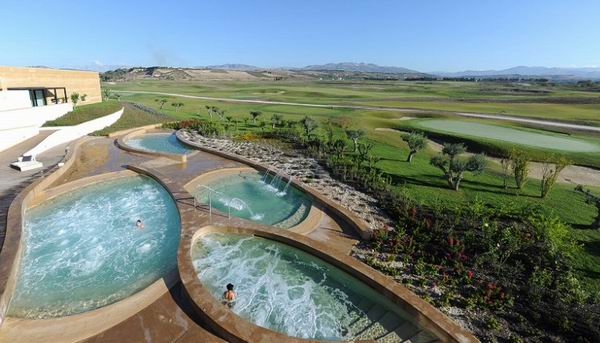






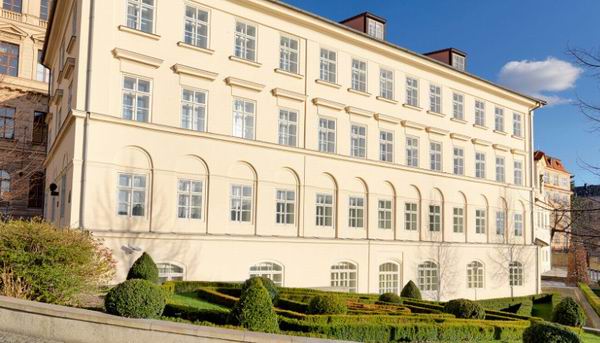


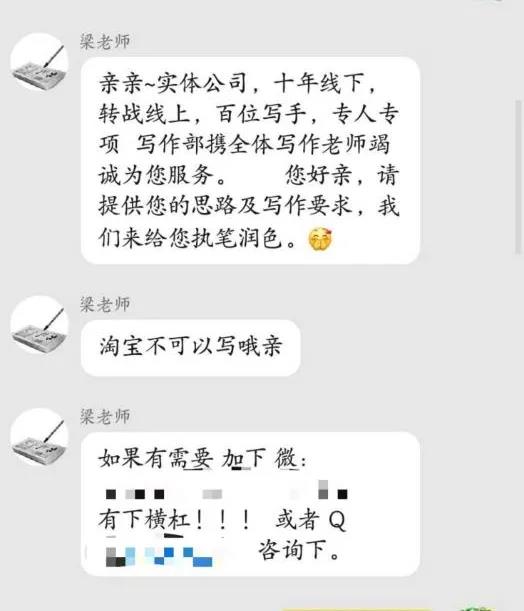
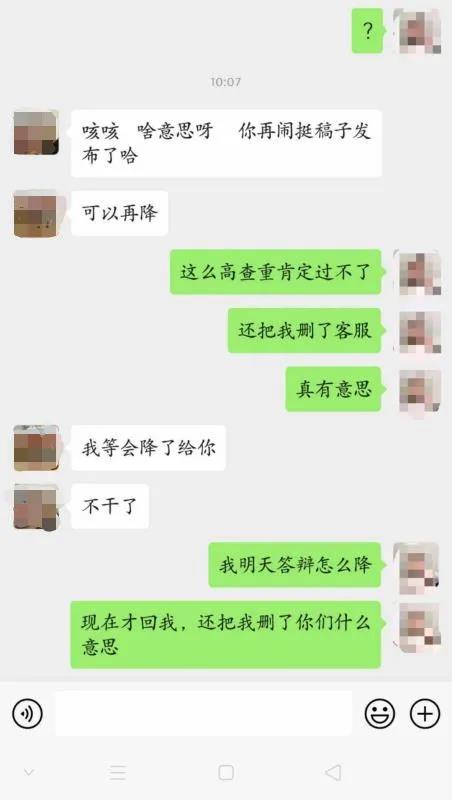

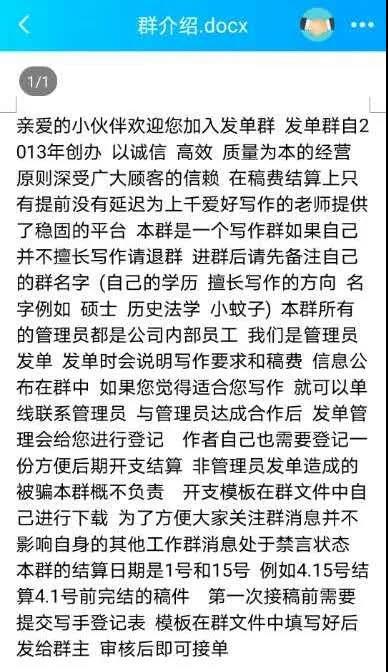
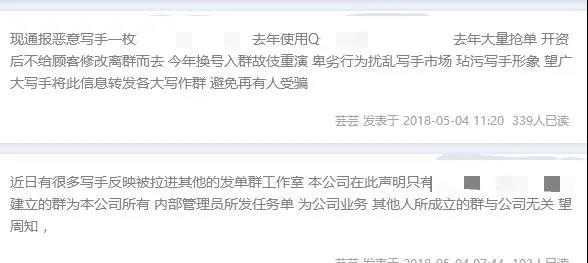
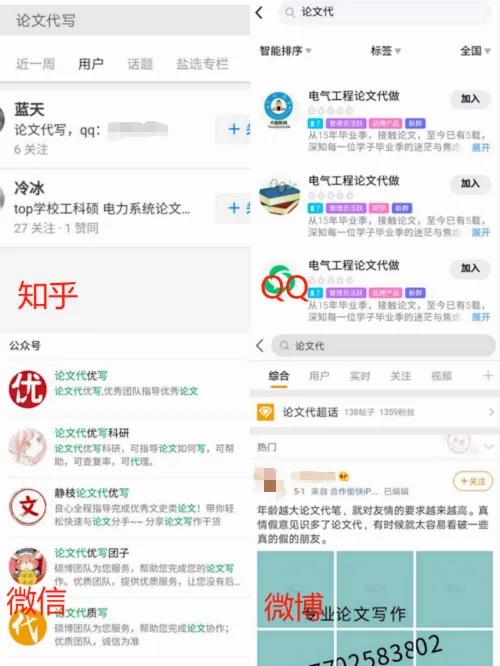
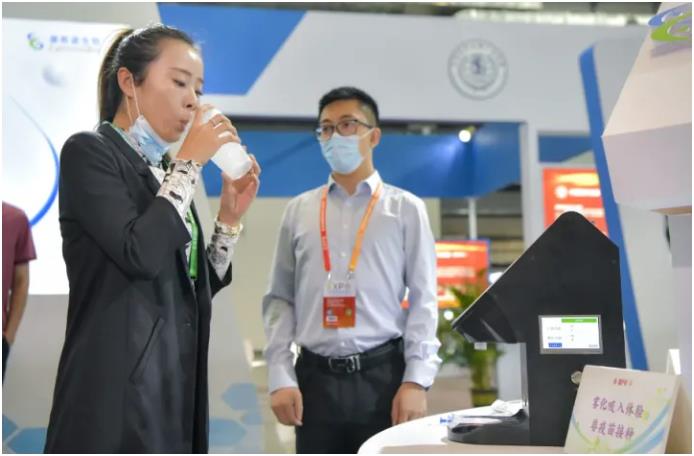

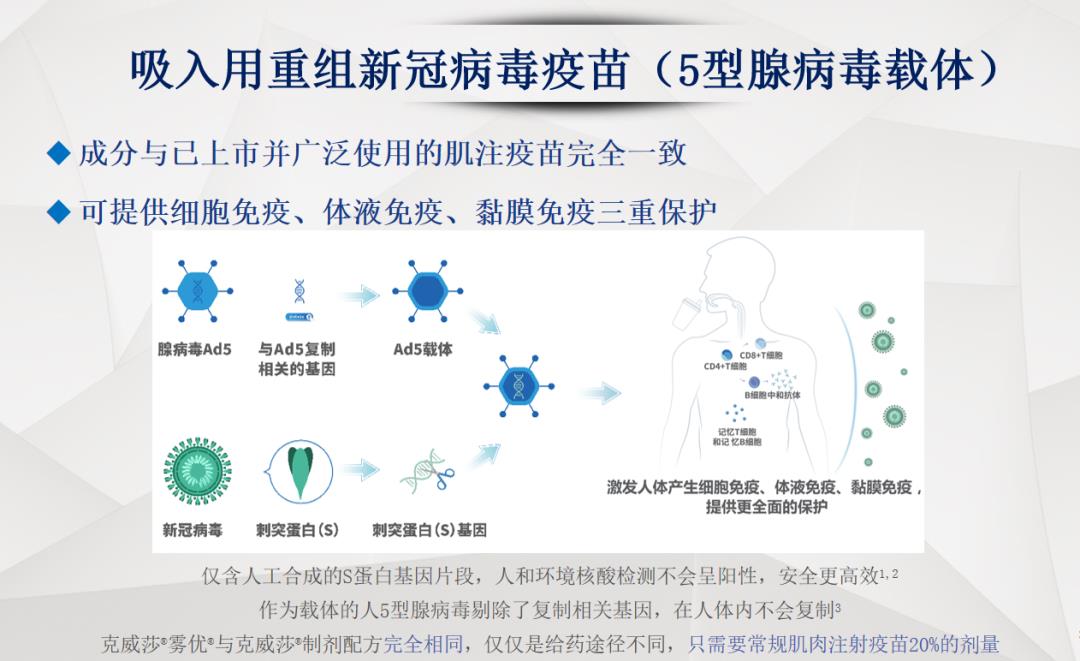
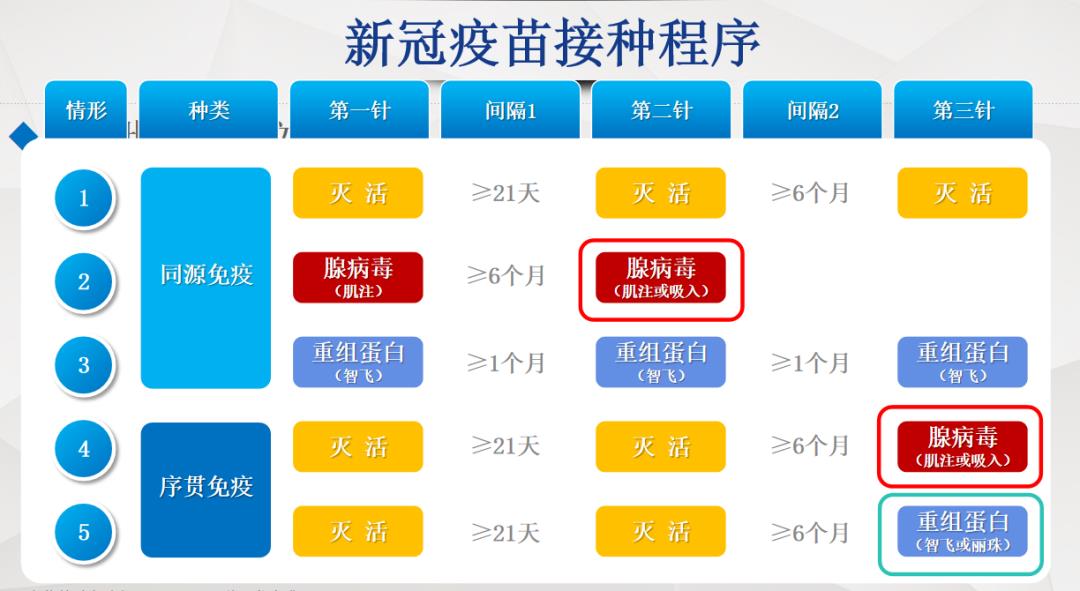
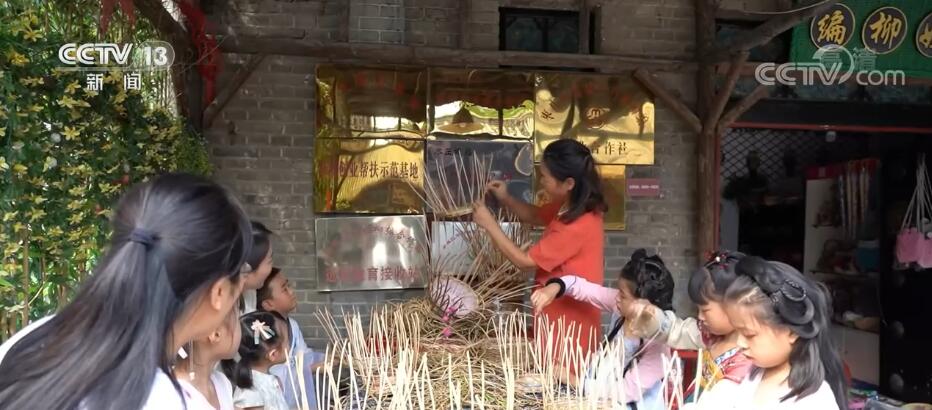
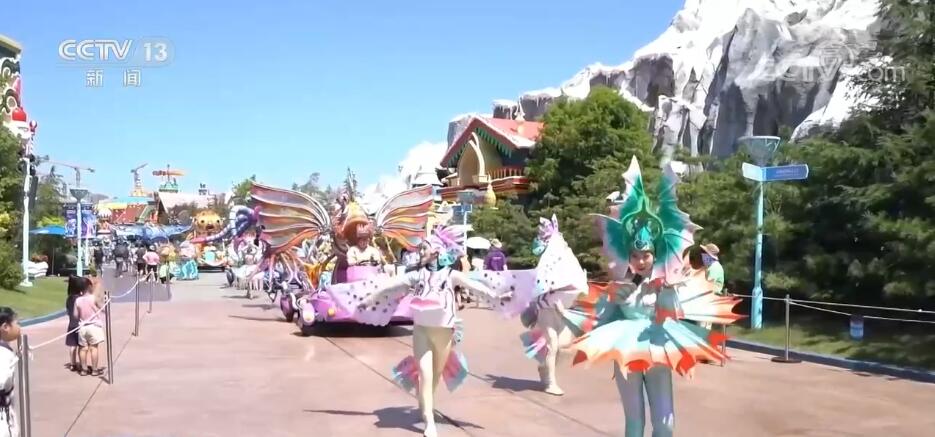
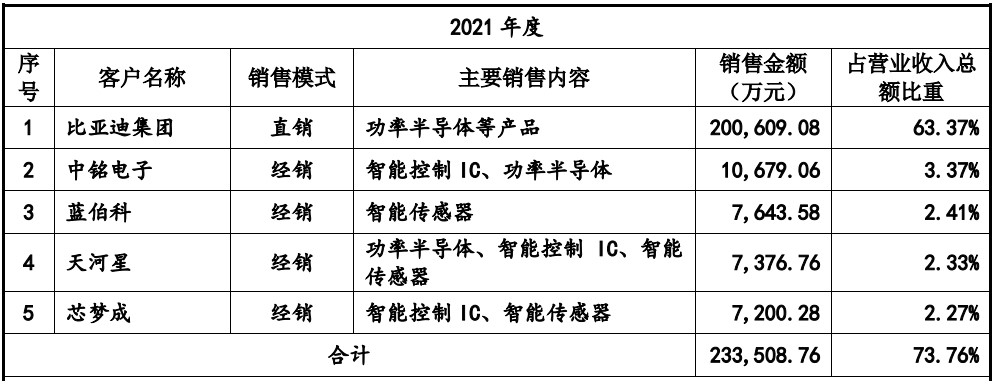 1.2 Mid-stream auto parts: Can the "Foday System" be both internal and external?
1.2 Mid-stream auto parts: Can the "Foday System" be both internal and external?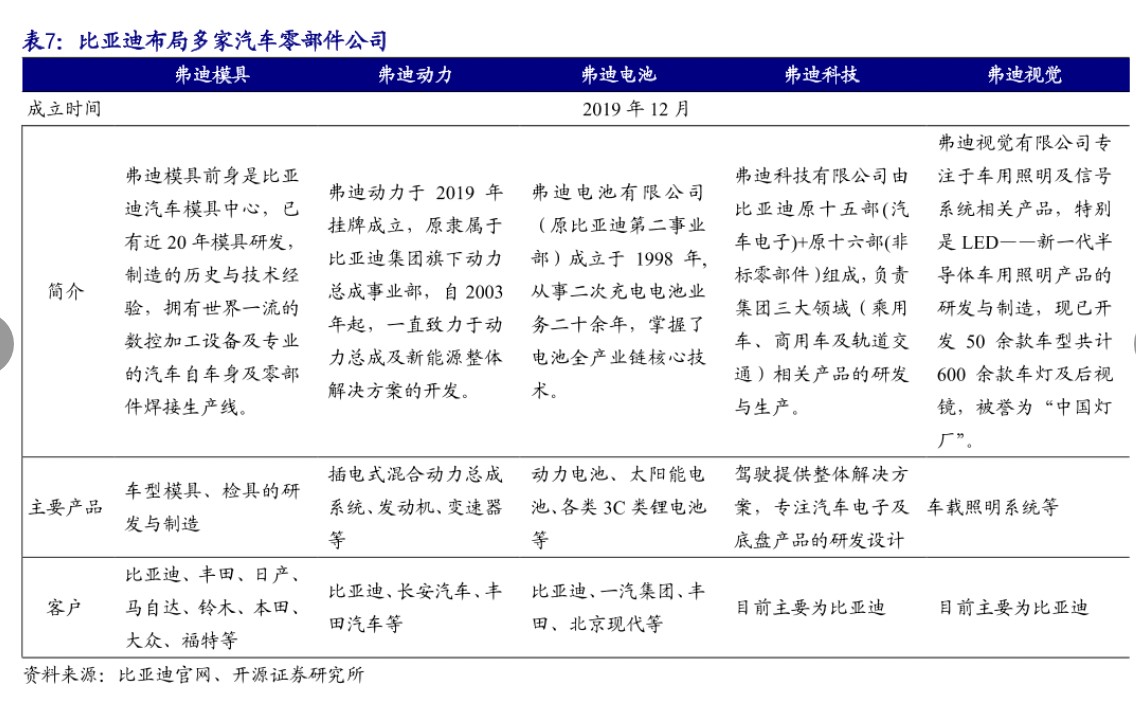 According to Wang Chuanfu, as a sub-brand of BYD, Foday Department is a complete auto parts supporting system, which is an inevitable choice for BYD after years of vertical integration. After the split, it will be priced according to the market-oriented mechanism to form a profit center.
According to Wang Chuanfu, as a sub-brand of BYD, Foday Department is a complete auto parts supporting system, which is an inevitable choice for BYD after years of vertical integration. After the split, it will be priced according to the market-oriented mechanism to form a profit center. 1.4 Downstream production base: the layout quantity is relatively advanced.
1.4 Downstream production base: the layout quantity is relatively advanced.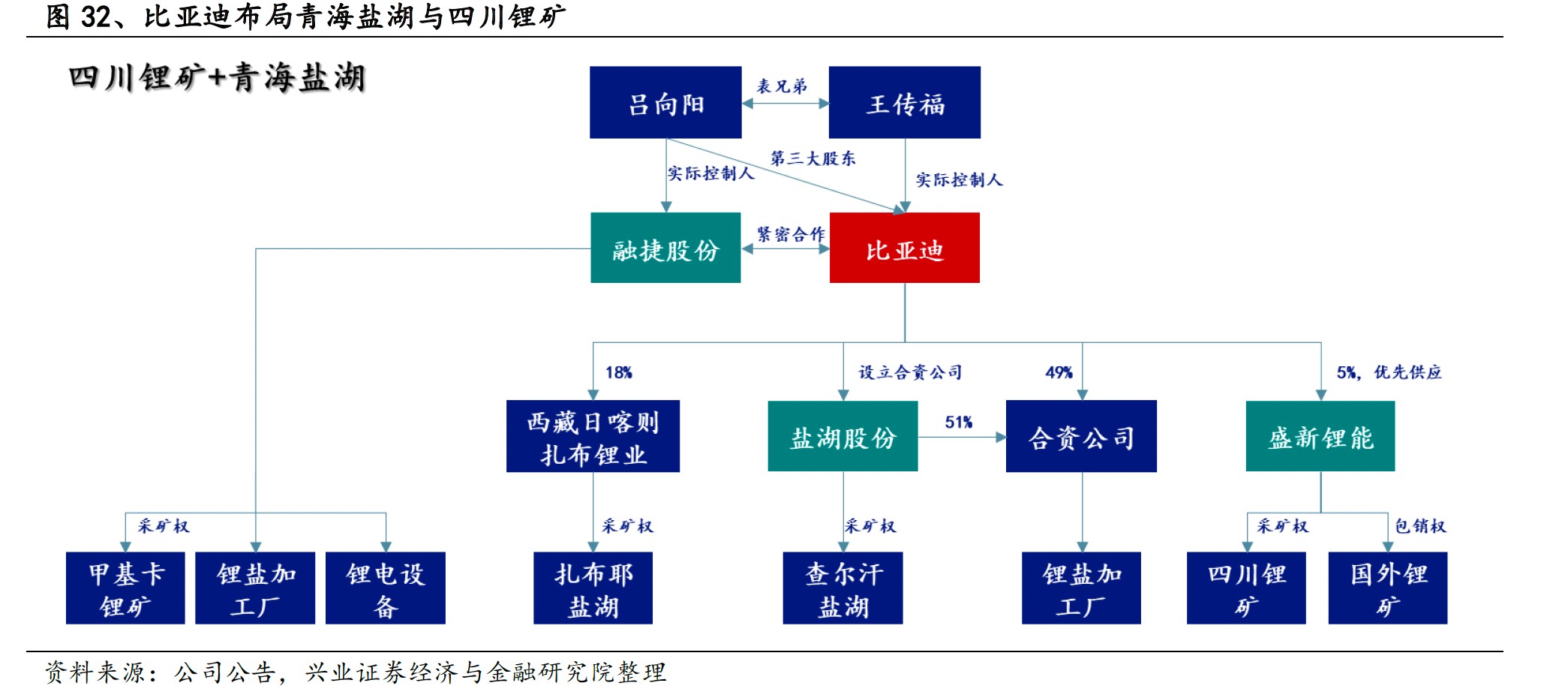 As for cathode materials, BYD, as an enterprise specializing in lithium iron phosphate batteries, can imagine the demand for Ferrous lithium phosphate. Therefore, on the basis of self-research and self-production, the company also guarantees the supply through the mode of foreign equity participation.
As for cathode materials, BYD, as an enterprise specializing in lithium iron phosphate batteries, can imagine the demand for Ferrous lithium phosphate. Therefore, on the basis of self-research and self-production, the company also guarantees the supply through the mode of foreign equity participation.